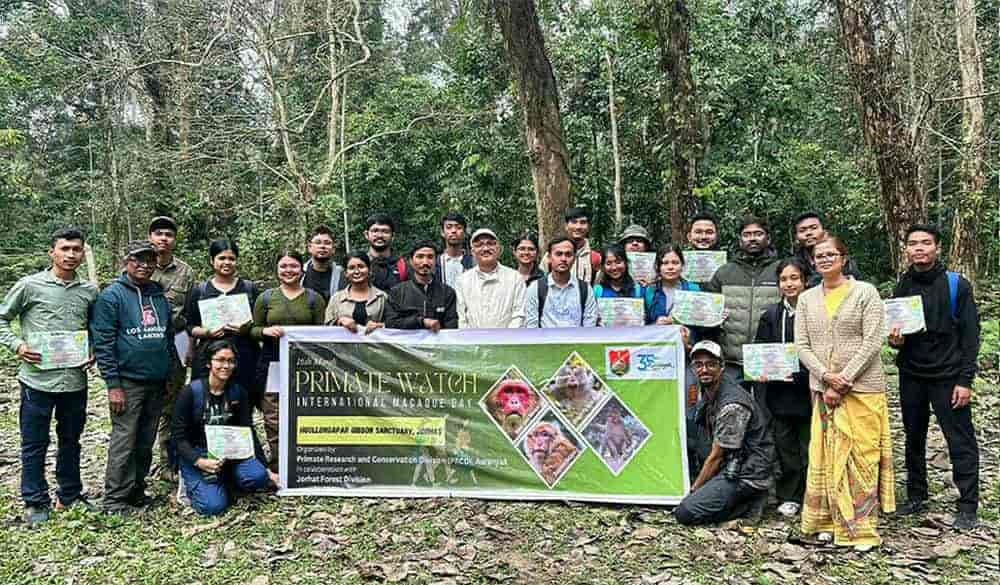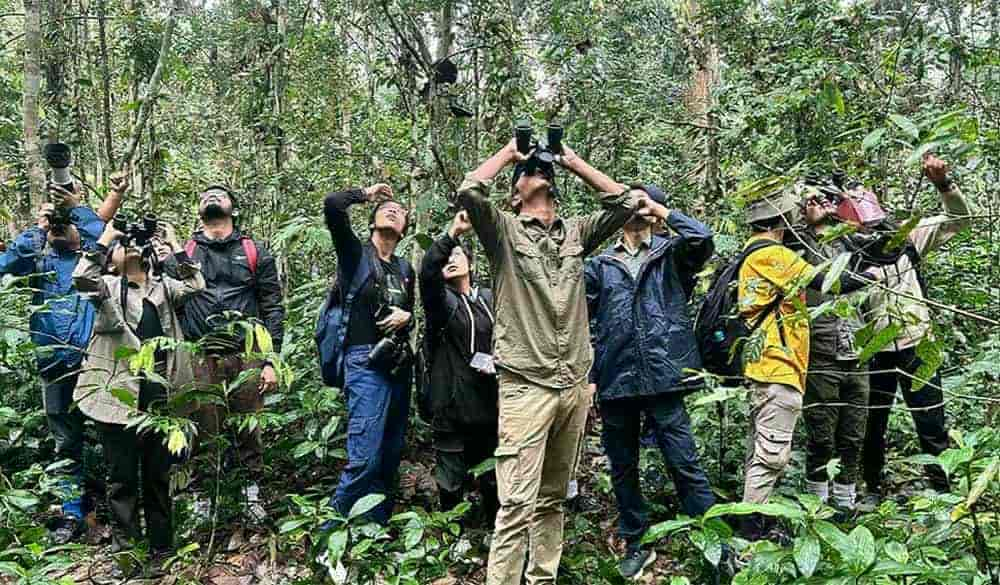Primate watch at Hoollongapar Gibbon Sanctuary promotes conservation awareness on International Macaque Day

In a bid to raise awareness about primate conservation, Aaranyak, a leading biodiversity conservation organization, in collaboration with the Jorhat Forest Division of the Assam Forest Department, organized a ‘Primate Watch’ event at the Hoollongapar Gibbon Sanctuary in Jorhat on March 16.
The initiative was part of the International Macaque Day observance, dedicated to the conservation of macaques and their habitats. The event brought together 20 participants, including students, nature enthusiasts, and professionals from different parts of Assam.
The programme began with a welcome address by Nandita Medhi, Senior Consultant at Aaranyak’s Primate Research and Conservation Division. Dr. Dilip Chetry, a renowned primatologist and Head of the division, delivered an informative session on Assam’s primates, with a special focus on macaques.
Under the guidance of researcher Akshay Upadhyaya, participants embarked on a two-hour primate-watching expedition within the sanctuary. They successfully spotted three primate species—the Hoolock Gibbon, Pig-tailed Macaque, and Rhesus Macaque—enhancing their understanding of these endangered species in their natural habitat.
Following the field observations, attendees participated in an interactive session where they shared their experiences and expressed appreciation for the initiative. Many participants requested more such programs in the future to deepen their engagement with conservation efforts.

Nandha Kumar, Divisional Forest Officer of Jorhat Forest Division, joined the session and encouraged participants to remain involved in conservation activities. Dr. Dilip Chetry extended gratitude to Dr. Bibhab Kumar Talukdar, Secretary General and CEO of Aaranyak, for his support and also thanked the Jorhat Forest Division for their collaboration in making the event a success.
To mark the successful conclusion of the event, all participants were awarded certificates, reinforcing their role in supporting primate conservation.

Leave a Reply